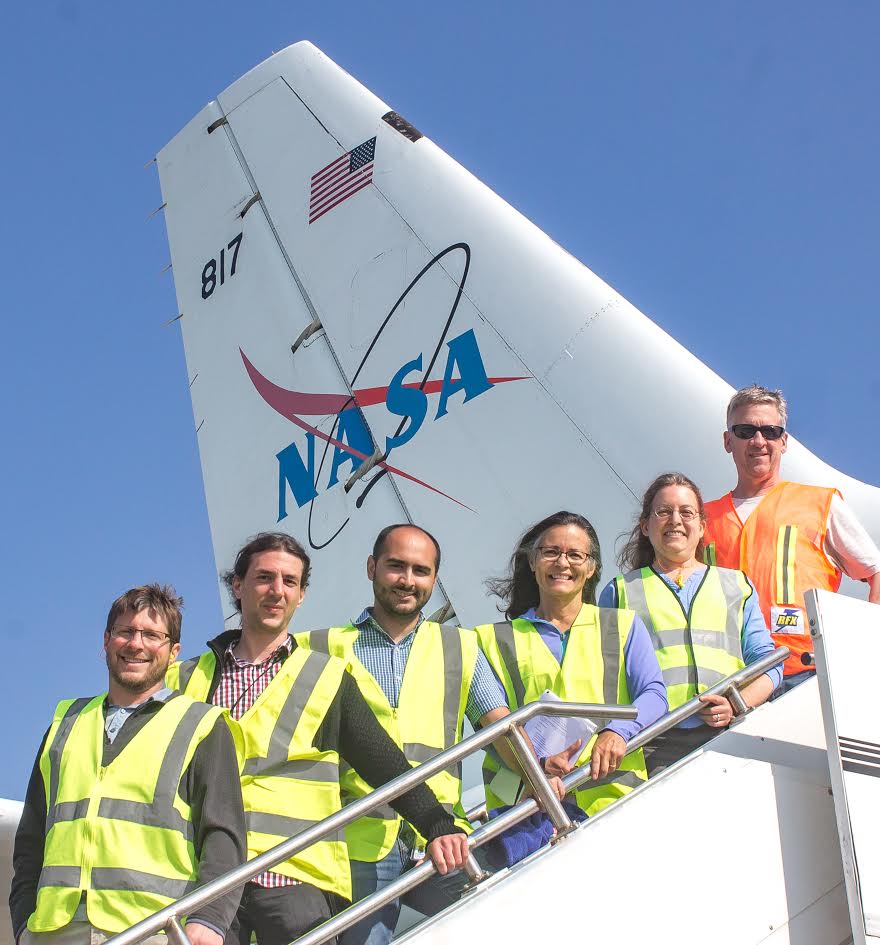Planes, ships and satellites: Investigating air quality in Korea
NCAR scientists are part of the KORUS-AQ field campaign
May 12, 2016 - by Staff
May 12, 2016 - by Staff
May 12, 2016 | Scientists from the National Center for Atmospheric Research are on the ground in South Korea as part of a field campaign to investigate the region's air quality.
Between May 1 and June 12, NCAR scientists and their colleagues from NASA, U.S. and South Korean universities, and South Korea’s National Institute of Environmental Research (NIER) will collect observations from airborne labs, ships, satellites, and ground-based instruments. The campaign, which involves more than 580 researchers from 72 institutions, is called KORUS-AQ (Korea U.S.-Air Quality study).
"These observations will help us develop a much better understanding of the various complex factors controlling air quality over the Korean Peninsula," said NCAR scientist Louisa Emmons, who is on site with KORUS-AQ. "The observations will help improve air quality models, and in turn, those models will help us interpret the current, as well as future, observations."

This 2007 NASA satellite image shows a swath of air pollution sweeping east across the Korean peninsula to Japan. (Image courtesy NASA.)
South Korea offers a rare opportunity to separate the diverse factors that contribute to air quality. For example, Seoul, the capital of South Korea, is one of the world's five most-populated metropolitan areas, but it is surrounded by rural, forested land. This stark separation gives scientists the ability to differentiate the components of pollution that originate from factories, tailpipes, and other human-related sources of pollution from those that originate from natural areas, including volatile organic compounds emitted by vegetation.
Because the Korean Peninsula is largely isolated by bodies of water, scientists can also more easily determine what kinds of pollution blow into the region—dust and industrial pollution from China, for example—as well as what kinds of pollution blow out of the region toward Japan.

From left: NCAR scientists Sam Hall, Benjamin Gaubert, Pablo Saide, Deedee Montzka, Louisa Emmons, and Andy Weinheimer. (Photo courtesy Sam Hall.)
NCAR scientists are contributing to the effort in several ways. A team led by Emmons is issuing chemical forecasts of pollution transport and formation so that the scientists taking airborne measurements can decide where, or whether, to fly. The planes being used during KORUS-AQ include a NASA DC-8, a NASA King Air, and a Korean King Air operated by Hanseo University and NIER.
Two NCAR research groups from the Atmospheric Chemistry Observations and Modeling lab are also flying instruments onboard the DC-8. One team, led by NCAR scientist Sam Hall, is measuring the amount of light available to break down compounds in the atmosphere. The second, led by NCAR scientist Andy Weinheimer, is measuring ozone and nitrogen oxides in the atmosphere. In combination with other instruments on the aircraft, these help to characterize the photochemical history, processes, and evolution of air pollution along the flight path.
Follow what's happening with KORUS-AQ at the NASA Earth Expeditions blog, or watch a video about the campaign here.
Writer/contact
Laura Snider, Senior Science Writer and Public Information Officer